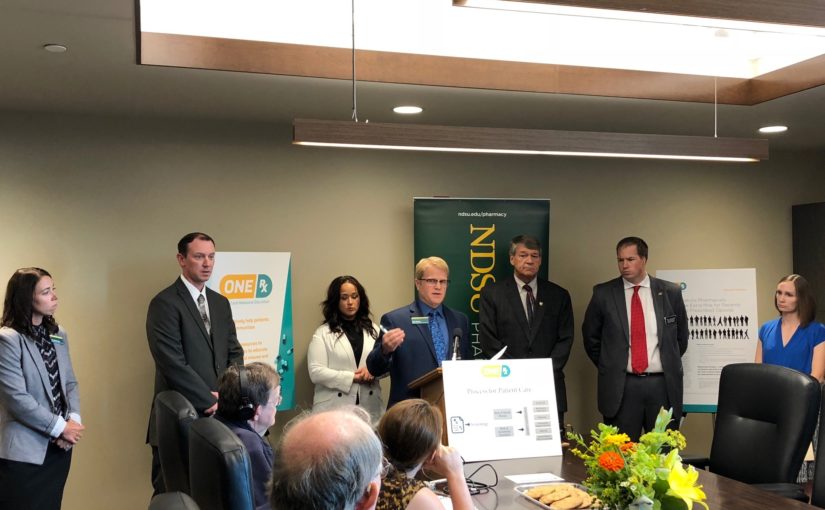As the opioid crisis remains in the minds of the public and the presence of the media, North Dakota State pharmacy professors work through a statewide program in an attempt to curb opioid deaths and advocate for responsible use of prescription drugs.
The program, called One Rx, is a program that uses pharmacists’ interactions with patients who are prescribed opioids to facilitate a conversation about their risk factors in an attempt to lessen the accidental overdose and misuse rates. The program was started because of the high death toll associated with opioid misuse, so the question was asked, “Can this be prevented?”
Mark Strand, a pharmacy professor at NDSU, explained how opioids interact with the body. He said there’s no threshold where opioids stop feeling good because of how they interact with certain receptors in the brain. Because of this, anybody can develop an addiction to opioids and anybody can overdose.
He also stated that, when prescribed, an overdose is generally not intended, but can occur because of certain risk factors. Opioid overdoses become lethal when the effects of the overdose, lessen or cut off air flow to the oxygen, effectively starves the body of oxygen leading to the person’s death.
NDSU professor Elizabeth Skoy added that simply because they are prescription drugs, that doesn’t mean they’re 100 percent safe, and that some side effects are expected. When those side effects are combined with certain risk factors, the result causes difficulty breathing. When a person doesn’t seek help because they are asleep at the time, or whatever the case may be, it could be deadly.
Because of those risk factors, Skoy then said that pharmacists are now allowed to prescribe naloxone to a person so that in the event they are struggling to breath as a result of the medication or an accidental overdose, a loved one living with them can administer the medication to stop the reaction. “This is a life saving medication,” Strand said.
The idea behind providing naloxone to family and friends of people using opioids is making the chance of stopping or preventing an accidental overdose much higher, therefore making the number of overdoses across the state go down.
The program works by using a combination of an algorithm that the doctors and pharmacists use to assess risk factors, such as other medication that person is using and their level of alcohol consumption, Skoy said. If somebody who is prescribed opioids is deemed high risk based on this algorithm, the pharmacists then have a conversation with the patient about their risk factors.
This conversation is intended to educate patients, and each conversation is tailored to the patient in question.
In a smaller scale test run of the project, Strand said approximately 50 percent of the patients involved benefited from the project based on their elevated risk factors and their addictive potential.
If the risk is great enough, the pharmacist can even recommend an alternative non-opioid medication, however, they cannot prescribe or change the prescription themselves.
One of the bigger risk factors to consider in the conversation of the opioid crisis is that over 60 percent of medication patients receive isn’t used.
Strand said this can be a danger in the university community, as young people do not have good risk appraisal due to where their brain is in development. That means that unused meds may be floating around. Strand cited a study that found that 9.5 percent of students have reported using prescription opioids without a prescription.
Skoy also wanted to communicate a message to students: If you suspect a loved one is misusing their opioid prescription, go to a pharmacy and obtain naloxone. Also, any extra opioids left over after a surgical procedure or medical problem can be dropped off at your local pharmacy.
As a way to prepare pharmacy students with the program, all NDSU pharmacy students go through the training. The training is a three-hour course that is completely free to all pharmacists in the state, and they are instructed about how to implement the screening tool.
